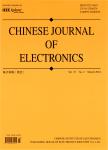A Hierarchical Scheme for Video-Based Person Re-identification Using Lightweight PCANet and Handcrafted LOMO Features
A Hierarchical Scheme for Video-Based Person Re-identification Using Lightweight PCANet and Handcrafted LOMO Features作者机构:Beijing Key Laboratory of Computational Intelligence and Intelligent System Beijing University of Technology Faculty of Information Technology College of Micro-electronics Beijing University of Technology College of Computer Science and Technology Shandong University of Technology
出 版 物:《Chinese Journal of Electronics》 (电子学报(英文))
年 卷 期:2021年第30卷第2期
页 面:289-295页
核心收录:
学科分类:0808[工学-电气工程] 0809[工学-电子科学与技术(可授工学、理学学位)] 08[工学] 080203[工学-机械设计及理论] 0802[工学-机械工程] 0701[理学-数学]
基 金:supported by the National Natural Science Foundation of China (No.61531006, No.61602018, and No.61701011) Beijing Municipal Natural Science Foundation Cooperation Beijing Education Committee (No.201910005007, No.KZ201810005002)
主 题:Video-based person re-identification Convolutional neural network Key frame detection Walking cycle extraction
摘 要:A two-level hierarchical scheme for video-based person re-identification(re-id) is presented, with the aim of learning a pedestrian appearance model through more complete walking cycle extraction. Specifically,given a video with consecutive frames, the objective of the first level is to detect the key frame with lightweight Convolutional neural network(CNN) of PCANet to reflect the summary of the video content. At the second level, on the basis of the detected key frame, the pedestrian walking cycle is extracted from the long video sequence. Moreover,local features of Local maximal occurrence(LOMO) of the walking cycle are extracted to represent the pedestrian’s appearance information. In contrast to the existing walking-cycle-based person re-id approaches, the proposed scheme relaxes the limit on step number for a walking cycle, thus making it flexible and less affected by noisy frames. Experiments are conducted on two benchmark datasets: PRID 2011 and i LIDS-VID. The experimental results demonstrate that our proposed scheme outperforms the six state-of-art video-based re-id methods, and is more robust to the severe video noises and variations in pose,lighting, and camera viewpoint.



